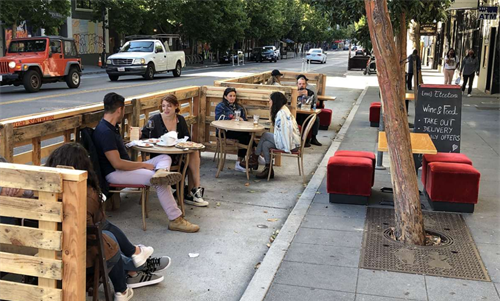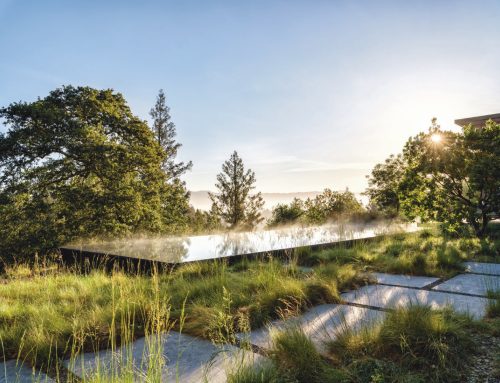by John King
First things first: The restaurants that are converting parking spaces to dining patios in cities across the Bay Area aren’t focused on aesthetics. With local governments’ blessing, they’re trying to survive the coronavirus-ravaged times in which we live.
But as the parklet-like nooks proliferate — there probably are at least 100 in San Francisco alone — we’re seeing an ad hoc transformation of such commercial strips as Chestnut Street in the Marina, Valencia Street in the Mission and Green Street in North Beach.
Some are elaborate constructions. Others have a flimsy, spur-of-the-moment air. Your table might be on a wooden platform, a carpet of artificial grass or stark, unadorned asphalt.
Many have plastic or wooden partitions between widely spaced tables. Some — how shall I be polite about this — take a dangerously lax approach to the need for safe social distance.
In a strange way, this is urban design for the pandemic age. Which means there’s a genuine need for basic standards that businesses should aspire to, no matter how ad hoc the tools. Otherwise, blocks could end up looking so cluttered and desperate that potential patrons won’t want to visit once the novelty wears off.
And by the way, don’t call them parklets: Those scaled-down public spaces allowed under San Francisco’s parklet program must be open to everyone, not just paying customers. Real parklets also have higher structural standards, since they’re intended to last. These nooks, at least for now, are only permitted to be place through December.
Which makes the newcomers “shared spaces platforms,” according to city bureaucrats. That’s not nearly as catchy as in Philadelphia, which has a similar program but uses the term “Streetery.”
Yes! Let a thousand streeteries bloom. Especially ones that keep these six simple features in mind. READ the article on sfchronicle .com
Tagline Box for Emphasis
Your Content Goes Here





